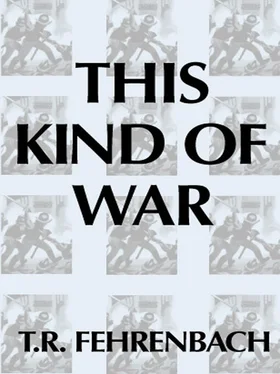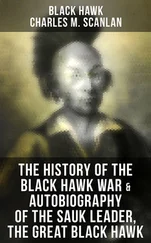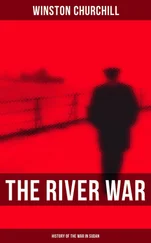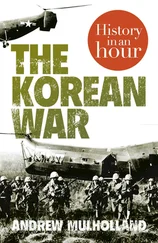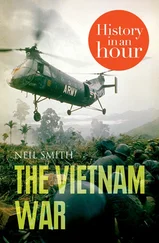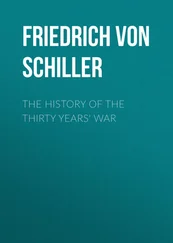Pistol, Caliber .45 M-1911 A-1: The standard United States side arm, a large semiautomatic pistol, with great stopping power and an effective range of some 25 yards. Developed and issued prior to World War I, it was carried by field-grade officers, signal linemen, gun crews, tankers, and men whose duties of other burdens precluded carrying of rifle or carbine.
Browning Automatic Rifle, or BAR: Firing the same cartridge as the Rifle, M-1, either semi- or full automatic, the bar could be operated either as a shoulder weapon or from a bipod. With a rate of fire of almost 500 rounds per minute, it was the principal automatic weapon of the rifle companies, one or more being issued to each rifle squad. Weighing 16 pounds, it was developed from Browning's principle during World War I.
U.S. Machine Gun, Caliber .30, M-1919 A-3 (Light Machine Gun, or LMG): An air-cooled, 32-pound fully automatic machine gun, with bipod and shoulder rest; recoil-operated on the Browning principle, capable of sustained fire of 450-500 rounds per minute. Firing the same cartridge as the Rifle, M-1 and BAR, it was the infantry platoon machine gun. Developed in World War I.
U.S. Machine Gun, Caliber .30, M-1917 A-1 (Heavy Machine Gun, or HMG): a heavier version of the above, water-cooled and tripod mounted, and thus capable of both a greater, longer, and more accurate rate of fire. Issued to the Weapons Company of the infantry battalion. There were approximately 500 machine guns of both types in the U.S. infantry division.
U.S. Machine Gun, Caliber .50, Browning: Weighing 82 pounds, this large-caliber machine gun was mounted on trucks, tanks, and other vehicles, and not carried into close infantry combat. Air-cooled, but with a heavy barrel, the .50-caliber machine gun fired approximately 575 rounds per minute, to a range of 2,000 yards. Approximately 350 scattered throughout the infantry division.
Rocket Launcher, 3.5-inch or 2.36-inch (Bazooka); Rocket launchers, developed during World War II, fire a hollow shaped charge capable of penetrating thick armor plate. The 3.5, which replaced the obsolete 2.36 in 1950, weighed 15 pounds and fired an 8.5-pound charge. There were some 600 bazookas in the Korea infantry division. Characterized by a large and distinct backblast, the aluminum tube generally was not effective beyond 75 yards against medium armor. Widely issued as infantry antitank weapon.
The 57mm, 75mm, and 105mm recoilless rifles: Infantry-carried artillery. They develop high blast from escaping gases on discharge, but no recoil, as with howitzers or cannon. The obsolescent 57mm could be shoulder-fired, while the newer and heavier guns were crew-served, firing from tripods. Effective against infantry and fortifications, such as bunkers, they fire regular shells with a flat trajectory over long ranges. The 105mm was developed during Korea.
Infantry mortars, 60mm, 81mm, 4.2-inch: Mortars are primarily antipersonnel weapons, consisting of simple, seated-breech tubes and base plates, which throw high explosive shells at a high angle, capable of reaching into valleys, trenches, and into defilade impervious to direct fire. The 60mm mortars were carried into position with the rifle companies; the 81mm's were handled by the weapons companies, and the 4.2-inch fired by a special mortar company within the regiment. The 81mm, with an effective range of 4,000 yards, to 1,800 for the 60mm, weighs more than 100 pounds and is not easily transportable in rough terrain by foot troops. The 4.2-inch, virtually an artillery weapon, is normally vehicle mounted.
The Quad .50: This was a half-tracked vehicle of World War II vintage, mounting four .50 machine guns capable of being fired as a unit. Developed as an antiaircraft weapon, with the advent of fast jet craft it became an antipersonnel weapon capable of hurling an immense amount of fire into hillsides and valleys against advancing infantry, or of throwing long-range harassing small-arms fire against enemy routes by night. Firing as many as 100,000 rounds per day, the Quad .50 could go over hills like a vacuum cleaner, sucking them devoid of life.
The Dual 40: Also developed as an AA weapon, the Dual 40 was a fully tracked vehicle with a tanklike silhouette mounting twin Bofors 40mm antiaircraft automatic cannon. It was also used to support the infantry line, in the same manner as the Quad .50.
The artillery weapons. During Korean operations, the standard U.S. artillery of World War II, the 105mm, 155mm, and 8-inch howitzers and rifles were employed in tremendous quantity. Developments were made in direction, spotting, and radar-sensing. Toward the end of the conflict, Korea was primarily an artillery war, with both sides dug in and cannonading each other rather than employing maneuver.
Armor. At the outset of the fighting, to its tremendous disadvantage, the United States had no tank in the Far East capable of engaging the obsolescent Russian T-34. The light M-24, primarily a reconnaissance vehicle with thin armor plate and light 75mm cannon, was augmented during August and September, 1950, with various U.S. interim model medium tanks, such as the M-26 Pershing, mounting a 90mm gun. Gradually, the old M4A3E8, the World War II workhorse, the Sherman, fitted with a newer high-velocity 76mm gun, became the principal Korea battle tank. It had a high silhouette, light armor, and an inadequate gun, but it was more maneuverable in the alternately steep and boggy Korean terrain than more modern tanks, such as the heavy-armor, heavy-gun British Centurion III. Failure to mass-produce a good main battle tank was one of the Army's principal weaknesses during the period; the concentration was more on seeking an effective antitank weapon than relying on the more expensive tank itself.
The Communist Nations
Throughout the fighting, the enemy was adept at capturing and employing U.S. weapons and equipment. During the first ninety days, the North Korean People's Army secured enough equipment from ROK and U.S. divisions to outfit several of their own; and the Chinese Communist Forces, on entrance, were in many cases equipped with U.S. arms shipped to the Nationalist Government both during and after World War II, all of which had fallen into Communist hands. The Chinese (as the ROK's) also had a considerable quantity of surrendered Japanese arms and ammunition, from rifles to field guns. The principal source of armament for both North Koreans and Chinese, however, was Soviet Russia. Just as the United States provided 90 percent of all munitions used in the United Nations forces, the Russians designed, mass-produced, and delivered the bulk of all Communist weapons.
As with American arms, the majority of Russian equipment was of World War II vintage.
Russian weaponry, as Russian equipment in general, has one marked characteristic: it is extremely rugged, of the simplest design consistent with efficiency, and very easy to maintain, making it in many cases more suitable for the equipping of peasant armies than the more sophisticated U.S. arms. Despite its simplicity and lack of refinement, it is good.
Infantry rifles. The Communist forces were equipped with a miscellany of shoulder weapons, from the Russian 7.62mm carbine, a bolt-action rifle of 1944 vintage, to Japanese 7.7mm Imperial Army rifles, taken by the Soviets from the Kwantung Army in 1945 and turned over to the CCF The tendency in Communist armies has been to discard the rifle in favor of the submachine gun, less accurate, but able to throw a much higher volume of fire in the hands of unskilled personnel.
The Submachine Gun 7.62mm PPSh 41 (Burp Gun): Designed during World War II, the PPSh 41 submachine gun indicated the Soviet belief that highly accurate small arms were wasted in the hands of ground troops, while a large volume of fire was a requisite. Cheap to make, simple to operate, and thoroughly dependable under any battlefield conditions, the Soviet submachine gun was the best of its class during World War II. Fired either full or semiautomatic, it held a magazine of 72 rounds, with a cyclic rate of 100 per minute. Inaccurate except at close ranges. Toward the end of the war, Chinese infantry carried sub-machine guns or grenades almost exclusively while on the offensive.
Читать дальше
